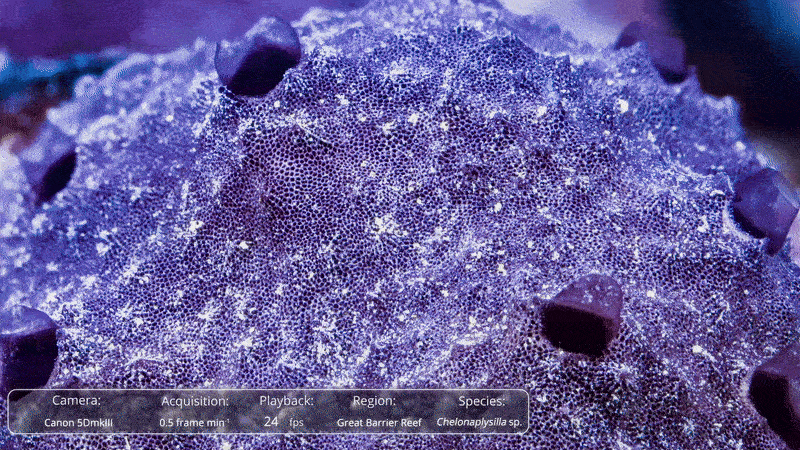Mollusks, Worms, Sponges, Starfish
200-Million-Year-Old Poop Reveals Parasites That Infected a Crocodile-Like Reptile
The prehistoric fossil could help researchers understand the relationships between parasites and host organisms in the Late Triassic
Scientists Revive 46,000-Year-Old Roundworms From Siberian Permafrost
The nematodes had survived in a state of slowed metabolism called cryptobiosis, according to a new paper
Giant Snails Take Over Part of Florida—Again
Officials issued a quarantine to control the invasive species, which devours vegetation, damages structures and can carry a parasite dangerous to humans
Rare 'Technicolor' Rainbow Sea Slug Found in England
It's only the fourth record of the species in the U.K., and experts say it's a sign of warming waters due to climate change
Comb Jellies May Be the World's Oldest Animal Group
A new study suggests that ancestors of comb jellies, not sponges, were the first to break off from the common ancestor of all animals
Scientists Reintroduce 5,000 Snails to French Polynesian Islands
The project's organizers say it's the largest-ever release of creatures that are extinct in the wild
Humans May Have Eaten Giant Snails 170,000 Years Ago
Shell fragments from a cave in southern Africa show signs of exposure to extreme heat, suggesting they were cooked
How Lunar Cycles Guide the Spawning of Sea Creatures
Researchers are starting to understand the biological rhythms that sync worms and corals to phases of the moon
Researchers Find Living Clam Thought to Have Gone Extinct Thousands of Years Ago
While looking for sea slugs in California, a marine ecologist came across the tiny, ten-millimeter mollusks
Mysterious ‘Alien Goldfish’ May Have Been a Mollusk
The bizarre creature’s anatomy had stumped scientists for decades
Nine-Year-Old Finds a Three-Foot-Long Earthworm in His Backyard
The New Zealand boy named the creature “Dead Fred”
Sea Sponges Sneeze Sediment-filled Snot
New research reveals the animals expel mucus as a form of self-cleaning and other creatures eat the stuff up
Scars on Snails Offer a 100,000-Year Record of Crab Populations
A surprisingly simple technique for studying marks on shells shows how California’s crab population has changed over millennia
Trove of Starfish Deposited as Offering to Aztec War God Found in Mexico City
Researchers discovered 164 sea stars placed in the Templo Mayor around the turn of the 16th century
Science Twitter's 'InverteButt Week' Puts Backsides on Display
The behinds of spineless organisms are diverse among species and serve a multitude of purposes beyond expelling waste
How Pearls Obtain Their Remarkable Symmetry
A concept called 'pink noise' brings order to seemingly disorderly patterns seen in classical music, seismic activity, economic markets and even pearls
Penis Worms May Have Been the First Real Hermits
Hermit crabs may have evolved hermiting behavior 180 million years ago, but penis worms beat them by more than 300 million years
How Do Snails Get Their Shells? And More Questions From Our Readers
You've got questions. We've got experts
Are These Snail Shells the World's Oldest Known Beads?
Found in a Moroccan cave, the prehistoric jewelry dates to between 142,000 and 150,000 years ago
More Than a Third of Shark Species Are Now Threatened With Extinction
Overfishing, habitat loss and climate change are behind the 'desperate' decline
Page 2 of 7
:focal(350x233:351x234)/https://tf-cmsv2-smithsonianmag-media.s3.amazonaws.com/filer_public/e1/0f/e10f0665-9236-410b-8543-fa3b02e0edb1/low-res_fig1.jpg)
:focal(2264x1509:2265x1510)/https://tf-cmsv2-smithsonianmag-media.s3.amazonaws.com/filer_public/d2/e2/d2e22cdf-0530-4db2-afa9-a4f47142eda0/gettyimages-1190593824.jpg)
:focal(376x261:377x262)/https://tf-cmsv2-smithsonianmag-media.s3.amazonaws.com/filer_public/78/e6/78e67063-be79-4eb5-acf5-eaa33fbd8dea/5502140-ppt_cropped.jpg)
:focal(2510x1410:2511x1411)/https://tf-cmsv2-smithsonianmag-media.s3.amazonaws.com/filer_public/bb/18/bb181e54-9792-430d-bb01-c7ee1cdd9526/2r1p978.jpg)
:focal(375x250:376x251)/https://tf-cmsv2-smithsonianmag-media.s3.amazonaws.com/filer_public/4c/10/4c109f93-330a-495d-b876-afc0d83aabb7/hormiphora_californensis_darrin_schultz_mbari_750px.jpg)
:focal(960x544:961x545)/https://tf-cmsv2-smithsonianmag-media.s3.amazonaws.com/filer_public/c4/9a/c49a4f12-c8a3-4bf4-bbb0-6932d701f1a7/partula_20snail_20website_20two.png)
:focal(1272x969:1273x970)/https://tf-cmsv2-smithsonianmag-media.s3.amazonaws.com/filer_public/d6/dd/d6dd991b-9ae6-475f-9884-528d6dd837b8/gettyimages-482129088.jpg)
:focal(800x602:801x603)/https://tf-cmsv2-smithsonianmag-media.s3.amazonaws.com/filer_public/d2/8a/d28a9303-1b11-424c-8e06-a42087e62255/coral-spawning_web.jpg)
:focal(1947x1168:1948x1169)/https://tf-cmsv2-smithsonianmag-media.s3.amazonaws.com/filer_public/32/9e/329ee5e0-5006-4306-960c-ac3018023e22/cymatioa_cooki_rainbow.jpg)
:focal(512x512:513x513)/https://tf-cmsv2-smithsonianmag-media.s3.amazonaws.com/filer_public/a9/b4/a9b45f81-39d6-4641-ad5e-f311cca70987/20tb-fossil1-jumbo.jpg)
:focal(620x351:621x352)/https://tf-cmsv2-smithsonianmag-media.s3.amazonaws.com/filer_public/52/27/522721a8-2be6-4555-a7d4-5932554adec1/1662482079684.jpg)

:focal(800x602:801x603)/https://tf-cmsv2-smithsonianmag-media.s3.amazonaws.com/filer_public/c0/7d/c07d1618-c39d-48a3-9d88-f9806e7d7c0a/gettyimages-1315209249_web.jpg)
:focal(619x399:620x400)/https://tf-cmsv2-smithsonianmag-media.s3.amazonaws.com/filer_public/a0/5d/a05dd2bb-1d35-4b42-869f-fb1fbeadb0cc/templo.jpeg)
:focal(1134x857:1135x858)/https://tf-cmsv2-smithsonianmag-media.s3.amazonaws.com/filer_public/ea/af/eaaf54ad-c558-47e6-b5ce-ecc5290637e9/41694106690_4d8b53e579_o.jpg)
:focal(2784x1856:2785x1857)/https://tf-cmsv2-smithsonianmag-media.s3.amazonaws.com/filer_public/5c/80/5c803a3a-816a-4c78-9dac-e9c5e9a7a99b/gettyimages-1135859252.jpg)
:focal(518x452:519x453)/https://tf-cmsv2-smithsonianmag-media.s3.amazonaws.com/filer_public/11/c3/11c319a9-75ab-49d7-a1dc-3af02c28e245/119_penis_worms.jpeg)
:focal(1000x743:1001x744)/https://tf-cmsv2-smithsonianmag-media.s3.amazonaws.com/filer_public/82/7f/827f0fdf-088d-47ef-be7c-bea4297232b6/mollusk-ask.jpg)
:focal(700x527:701x528)/https://tf-cmsv2-smithsonianmag-media.s3.amazonaws.com/filer_public/bd/94/bd9487fa-2433-4999-9201-35f61c9b8d6d/beads32.jpg)
/https://tf-cmsv2-smithsonianmag-media.s3.amazonaws.com/filer/3e/7c/3e7c81ca-1ce9-4f0c-9af7-d4c9ff7e5a46/26429506405_50243ba6cc_o.jpg)